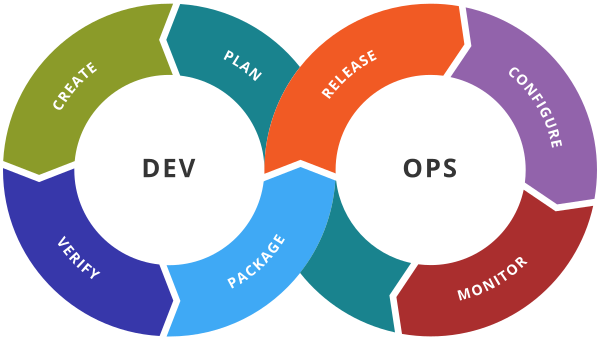
The operations team and the development team are the two departments that make up the software development process. The plan, the design, and the actual construction of the system are all the responsibility of the development team. The finished product will be tested and put into use by the operations team. The entire software development cycle used to be delayed in the past since the development team would frequently have to wait for the operations team’s comments before moving forward with their work.
DevOps enters the picture in this situation. The goal of the continuous process known as “DevOps” is to increase productivity and promote constant activity. It lets teams deliver swiftly with consistent and smooth deployments and enables businesses to adjust to upgrades and development changes more quickly. The DevOps strategy accelerates the flow between teams and successfully completes the software development process, despite possible communication difficulties.
The DevOps culture comprises various stages, each with its own set of tools to aid with the procedure. Making a strategy that details the application objectives to be given to the customer is part of the planning phase. The development team works on the code during the coding process, and then it is saved in a repository using software like Git. Using programs like Maven and Gradle, the code is made executable during the build step. During the testing step, the code is examined for any problems or errors. Automation testing is done using tools like Selenium. The operations team deploys the code to the working environment during the deployment phase, and tools like Ansible, Docker, and Kubernetes are used to automate the procedure. The product is continuously monitored throughout the monitoring phase, and processes like Nagios are utilized to automate this process. The DevOps life cycle is completed by sending any feedback obtained during this phase back to the planning stage.
Numerous well-known businesses, such as Amazon, Netflix, Walmart, Facebook, and Adobe, have embraced the DevOps methodology. For instance, Netflix launched its online streaming service in 2007. An hour of downtime was calculated to cost the business $200,000 in 2014. However, Netflix has been able to handle such problems thanks to the deployment of DevOps. They even designed a program known as the “Simian Army” that would repeatedly introduce bugs into the environment while oblivious to users. The development team was inspired to create a system that could endure this chaos by the ensuing pandemonium.
The DevOps methodology is a useful tool for enhancing the effectiveness and success of the software development process, to sum up. Companies may offer high-quality products to their consumers more quickly and reliably by removing barriers between the development and operations teams and optimizing the workflow with the use of various tools.
